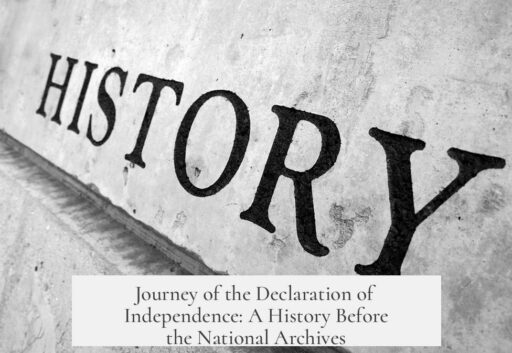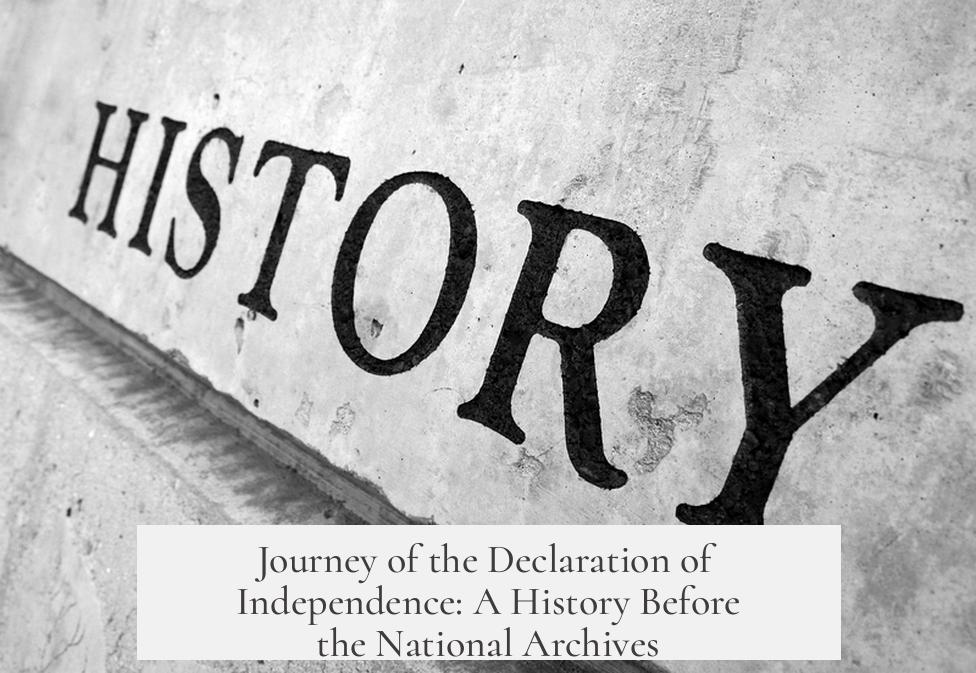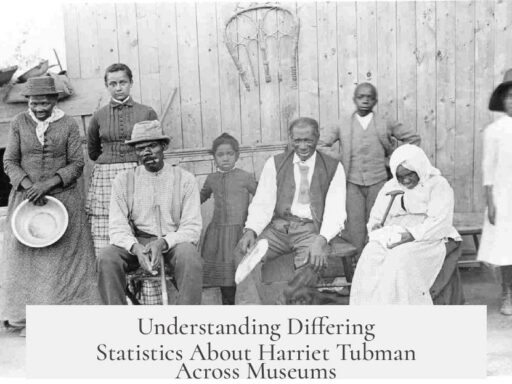Before being moved to the National Archives building, the original Declaration of Independence was kept in several locations over nearly two centuries, reflecting the nation’s changing centers of government and security concerns.
Initially, after its engrossment and signing in 1776, the document traveled with Congress through various temporary capitals during the Revolutionary War. These included Philadelphia, Baltimore, Lancaster (PA), York (PA), Princeton (NJ), Annapolis (MD), and Trenton (NJ). Its movements followed Congress, as the fledgling government moved to stay ahead of British forces and operate effectively.
In 1785, the Declaration found a more stable home in New York City, which served as the national capital then. It remained there until 1790. During this period, custody shifted officially to the Department of Foreign Affairs in 1789. The Secretary of State, Thomas Jefferson—primary author of the Declaration—was entrusted with its safekeeping. This formalized federal responsibility for the document.
By the end of 1790, the Declaration returned to Philadelphia, which was the capital again until 1800. In Philadelphia, it was kept in various government offices for approximately a decade. Then, under President John Adams, the document moved to Washington, D.C., the new capital. Its journey from Philadelphia to Washington involved travel by water routes: down the Delaware River and Bay, out into the ocean, into Chesapeake Bay, and up the Potomac River.
In Washington, D.C., custody became more complex. The Declaration was initially stored in Treasury buildings and later in the old War Office building. In 1814, during the British invasion in the War of 1812, Secretary of State James Monroe ordered its evacuation. Stephen Pleasonton, a government official, transported the document by wagon to a grist mill near Georgetown and then to Leesburg, Virginia. It stayed in a private home there for several weeks, protecting it from British forces before returning to Washington.
After the war, the document moved frequently within Washington, settling longest at the Patent Office from about 1814 to 1841. Though protected inside, it suffered damage from exposure to sunlight during this period, which affected the parchment.
In 1876, marking the centennial of American independence, the Declaration was sent back to Philadelphia for public display during the centennial celebration. It stayed there from May through October, allowing the public to view it, including a reading on July 4. Afterward, it returned to Washington, D.C., choosing a more direct route than before.
By the early 20th century, access to the document became restricted. In 1903, Secretary of State John Hay ordered it to be locked and shown only by special permission. In 1921, President Warren Harding transferred custody from the State Department to the Library of Congress. Librarian Herbert Putnam oversaw its move and the design of a protective “shrine” in the Library for its display, where it remained for two decades.
Following the attack on Pearl Harbor in 1941, fears of another attack prompted evacuation of the Declaration. It was sealed in a custom bronze case and transported under armed guard to Fort Knox in Kentucky. The document spent several years guarded inside the United States Bullion Depository, away from potential wartime threats. It returned safely to Washington in 1944, back to the Library of Congress display.
Finally, in 1952, under the authority of the Federal Records Act of 1950, the Declaration was formally transferred to the National Archives. The transfer ceremony took place on December 13, 1952. Military police transported the document in helium-filled glass cases, accompanied by a color guard and military escort. The Archivist of the United States, Wayne Grover, received custody. This building was specifically designed for the secure and proper preservation of foundational U.S. documents, where the Declaration remains to this day.
| Period | Location/Custody | Key Events |
|---|---|---|
| 1776-1785 | Various Revolutionary Capitals (Philly, Baltimore, Lancaster, York, Princeton, Annapolis, Trenton) | Moved with Congress during Revolutionary War |
| 1785-1790 | New York City | Capital and custody under Dept. of Foreign Affairs (Sec. of State Thomas Jefferson) |
| 1790-1800 | Philadelphia | Capital returns to Philly; document kept in government offices |
| 1800-1814 | Washington, D.C. (Treasury, War Office) | Moved to new capital; evacuated during British invasion in 1814 to Leesburg, VA |
| 1814-1841 | Washington, D.C. (Patent Office) | Longest stay in early D.C.; document exposed to sunlight damage |
| 1876 | Philadelphia (Centennial Celebration) | Public display for 100th anniversary of Declaration |
| 1903-1921 | Washington, D.C. | Restricted viewing; held by State Dept. |
| 1921-1941 | Library of Congress (Washington, D.C.) | Custody transferred; displayed in purpose-built shrine |
| 1941-1944 | Fort Knox, Kentucky | Evacuated during WWII; heavy guard storage |
| 1944-1952 | Library of Congress | Returned for display until National Archives ready |
| 1952-present | National Archives Building, Washington, D.C. | Secure long-term permanent residence for the document |
- The Declaration moved frequently to follow government relocation in the 18th century.
- Thomas Jefferson, as Secretary of State, was entrusted with its care starting in 1789.
- Invasion threats forced temporary evacuations during the War of 1812 and World War II.
- It saw a significant public display during the Philadelphia Centennial in 1876.
- Custody shifted from the State Department to the Library of Congress in 1921.
- Since 1952, the document has been housed at the National Archives, designed for preservation and public display.
Where Was the Declaration of Independence Kept Before the National Archives Building?

Today the Declaration of Independence rests securely inside the National Archives in Washington, D.C., but before finding this prestigious home, the original document took quite the historical road trip. It didn’t just chill in one place waiting for fame. From the chaos of the Revolution to the construction of Washington, every location reflects a chapter of American history.
So, where exactly was the Declaration of Independence kept before its grand arrival at the National Archives? Let’s unfold its incredible journey.
1. A Tumultuous Start During the Revolution
The Declaration officially came to life in mid-1776. On July 19, Congress ordered a fine parchment copy with all 56 members of Congress signing it by August 2. This wasn’t a static artifact; it was a living document on a perilous journey.
As Congress moved to various temporary capitals due to British threats during the war, the document went along for the ride. It spent short spells in Philadelphia, Baltimore, back to Philadelphia, then to Lancaster and York in Pennsylvania, and even crossed into Princeton and Annapolis. Talk about a busy travel itinerary.
Why all this movement? Well, the Continental Congress had to stay safe while running the country, so they packed up essential documents like this one for safekeeping. The document was a prized possession, much like someone today carrying their valuables whenever moving homes.
2. From Revolution to the New Nation: New York City’s Brief Hosting
Once peace was more firmly established, in 1785 the Declaration found a relatively steady lodging in New York City. This was the capital of the new United States before Washington, D.C., rose to prominence, so it made sense for such an important document to be kept where the government was based.
By 1789, custody officially passed to the Department of Foreign Affairs, with the Secretary of State overseeing it. Coincidentally, Thomas Jefferson—author of much of the document—was serving as Secretary of State then. Having the author care for the document adds a personal touch to its guardianship.
3. Back to Philadelphia and then to the New Capital

At the end of 1790, a decade filled with political wrangling and growth for the young nation, the document moved back to Philadelphia. It would remain there, in various locations, until 1800.
It was President John Adams who ordered the transfer of all official documents, including the Declaration, to the newly built capital, Washington, D.C. The journey wasn’t a simple road trip; the document traveled by water—down the Delaware River and Bay, out into the ocean, into Chesapeake Bay, and finally up the Potomac River.
This fascinating route underscores how the capital move was a big, complicated project under perilous conditions. The Declaration wasn’t given a VIP jet but a slow, scenic boat ride.
4. Early Washington D.C. Residences: Treasury and War Office Buildings
Upon arrival in Washington, the Declaration didn’t settle immediately into a national monument. It shifted among various government buildings—the Treasury Building and the old War Office Building.
In 1814, the British invasion during the War of 1812 forced a frantic evacuation. Secretary of State James Monroe sent a dispatch ordering Stephen Pleasonton to secure the document. Pleasonton whisked it away by wagon to a grist mill near Georgetown, then safely to Leesburg, Virginia. The Declaration hid in a private home for several weeks before its return to D.C.
5. The Patent Office: The Longest Stay Before Modern Times
After returning to the capital, the Declaration found its longest pre-archives home at the Patent Office from about 1814 until 1841. It even shared walls with George Washington’s commission, framed side-by-side—a symbol of the nation’s founding leadership.
Yet, during these years, the document faced the elements, enduring sunlight damage since proper preservation was not yet a priority or well understood.
6. Centennial Celebration and Restricted Viewing

Fast forward to May 1876, the Declaration made a comeback to Philadelphia. For the Centennial of Independence, it was displayed proudly, even read aloud on Independence Day. A crowd gathered to witness the very words that started a nation—an unforgettable moment in American history.
After the celebration, it returned once again to Washington but with increased security. By 1903, Secretary of State John Hay ordered that the document be locked and sealed. Public viewing was restricted to only those authorized—a sign of its growing cultural and historical importance.
7. The Library of Congress and the “Shrine”
In 1921, custody shifted from the State Department to the Library of Congress by executive order of President Warren Harding. The librarian Herbert Putnam personally oversaw moving the document atop several leather mailbags. He planned a proper display known as the “shrine,” designed by architect Francis H. Bacon. The Declaration finally had a dedicated home, but still outside our current National Archives.
8. World War II Precautions: Fort Knox
World events threatened the Declaration’s safety once again. After Pearl Harbor in 1941, the document was removed on December 23 from Washington, sealed inside a custom bronze enclosure, padlocked, and protected by armed guards.
It traveled under great security to Louisville, Kentucky, and made its way into Fort Knox—the legendary bullion depository. Surrounded by gold and guarded like a precious treasure, the Declaration stayed safe there amid wartime anxiety.
It returned to Washington in 1944 and was reinstalled in its Library of Congress shrine, resuming its role as a revered artifact.
9. The Final Home: The National Archives Building

By the early 1950s, conservation efforts intensified. The document was sealed again in 1951 with humidified helium to slow its deterioration.
Thanks to the Federal Records Act of 1950, custody transferred fully to the National Archives. On December 13, 1952, an unforgettable procession occurred: twelve armed special police officers carried the six parchment pieces in helium-filled glass cases, escorted by a Marine Corps personnel carrier and honored by a color guard.
The parade down Pennsylvania and Constitution Avenues to the newly built National Archives marked a new chapter in the Declaration’s story. Archivist Wayne Grover officially received the documents that day.
And there the Declaration has remained ever since, resting in a specially designed display case inside the National Archives, shielded from light and air, ready for generations to marvel at the nation’s birth certificate.
Why Does the Document’s Journey Matter?
Understanding the journey of the Declaration before the National Archives reveals more than just its location. It illustrates the care, challenges, and changing values around preserving history.
- The constant moves during the Revolution show how fragile the new nation was.
- Its long stays in government buildings reveal how historical preservation was sometimes less than perfect.
- The wartime evacuations highlight how the document symbolized the heart of America, worth risking much to protect.
- Its final arrival at the Archives symbolizes our modern commitment to safeguarding history.
Next time you walk into the National Archives to see the Declaration, imagine this old parchment’s epic voyage, from revolutionary battlegrounds to the protective vaults of Fort Knox, and finally, to the quiet, reverent halls where it rests today.
Isn’t it amazing how a piece of parchment can tell the story not just of freedom, but of resilience, care, and the evolving story of a nation?




